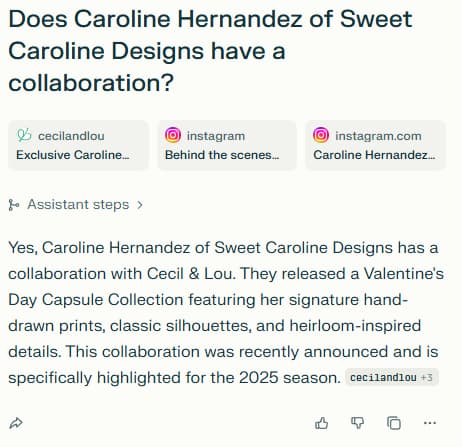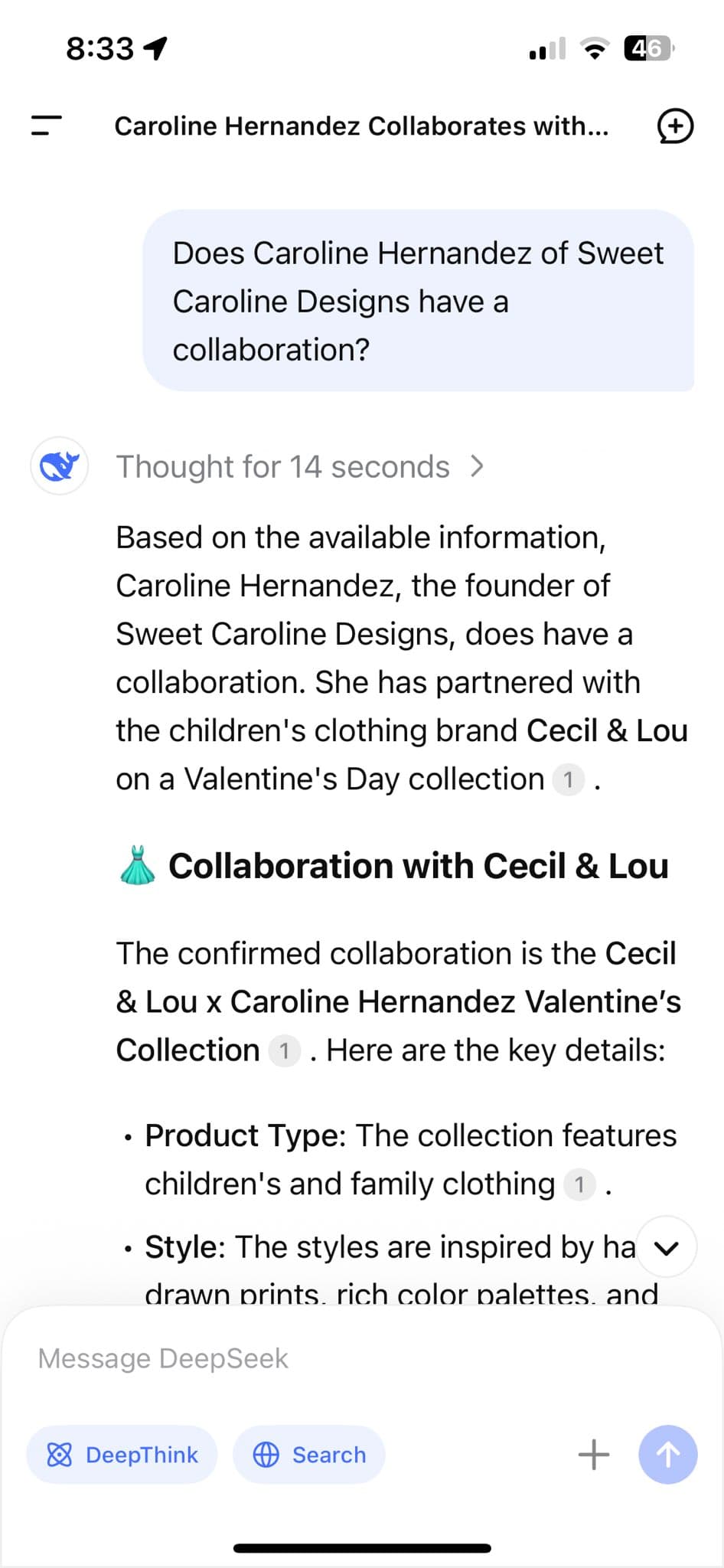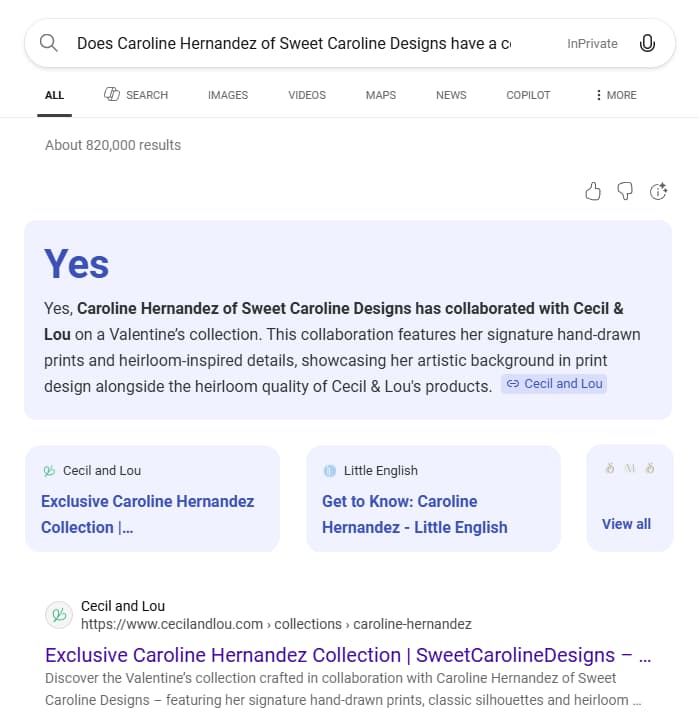Listen: TLDR Audio Summary (1:29)
Yesterday, Cecil & Lou, a boutique children’s brand in Texas, launched a new collection — the Cecil & Lou × Caroline Hernandez Valentine’s Capsule.
That capsule has since concluded, but the case study remains powerful. The collection page is still live, still indexed, and still being cited by AI systems today — even without active products. That in itself is the point: AI responds to structure, clarity, and meaning, not inventory status.
When the collaboration launched, we enhanced the page using our AI Search Optimization framework within hours. Schema. FAQs. Meaning-rich descriptions. Clean internal links. Titles and summaries written for comprehension, not keyword stuffing. And then we waited.
What happened next was worth pausing for.
The Experiment
If traditional SEO is about climbing the mountain, this was about whispering to the wind and seeing if the wind could hear. We optimized the page using the same principles we use for every Bailes + Zindler client in East Texas.
- Structured data for collections, FAQs, and products
- Context aware metadata built for natural language search
- Rich content describing materials, personalization, and internal links
Then we asked three of the most advanced AI engines, Perplexity, DeepSeek, and Microsoft Copilot, to describe the collection. Each one found it. Instantly.
The Results
AI did not just find the page. It understood it.
Perplexity cited the site as a source.
DeepSeek summarized its fabrics and themes.
Copilot used the FAQs to answer conversational prompts.

Perplexity cited the collection as a source.
DeepSeek summarized fabrics and themes from the collection.
Copilot answered conversational prompts using the page FAQs.
It was not luck. It was structure, the quiet logic of metadata, phrasing, and schema all speaking the same invisible language.
The Shift
In The Tipping Point, Malcolm Gladwell wrote that small, precise actions can set off cultural epidemics. AI Search Optimization feels like one of those moments.
For the first time, the signals we send through structured data are no longer just for Google’s crawlers. They are for engines that think in sentences, not rankings.
- Google’s AI Overviews generate summaries for a significant slice of U.S. searches
- Bing Copilot blends search and AI narrative, often citing new and smaller brands
- Perplexity and DeepSeek read schema as conversation and translate it into answers
To be visible in 2026 is not to be ranked number one. It is to be cited, to be trusted enough to be quoted.
What This Means for Businesses
If AI engines are pulling answers directly from your competitors, your brand may already be invisible, even if your Google rankings look fine.
The Cecil & Lou test shows that a single new page, structured properly, can surface in hours instead of weeks.
Here is what matters most:
- Schema everywhere, Product, FAQ, Collection, Breadcrumb
- Conversational, entity rich content that reads like an answer
- AI friendly sitemaps and llms.txt to guide crawlers directly
- Internal UTM tracked links to strengthen context and trust
These signals tell AI exactly what your page is, what it means, and why it matters.
The Takeaway
When we say our work works, this is what we mean.
A single collection page, launched one morning in Texas, appeared that same night in the vocabulary of the world’s most advanced AI search engines. That is the new definition of visibility. Not just being found, but being used.
In the age of AI search, discovery is not an outcome. It is a conversation. Your content is either part of it or forgotten.
Learn More
See how AI Search Optimization can help your brand appear in Perplexity, Copilot, and Google’s AI Overviews.
Learn More About AI Search Optimization

